Conservation Priority Species
Explore detailed profiles of UK aquatic Coleoptera species included in Biodiversity Action Plans. Each profile provides essential information about identification, distribution, ecology, and conservation status.
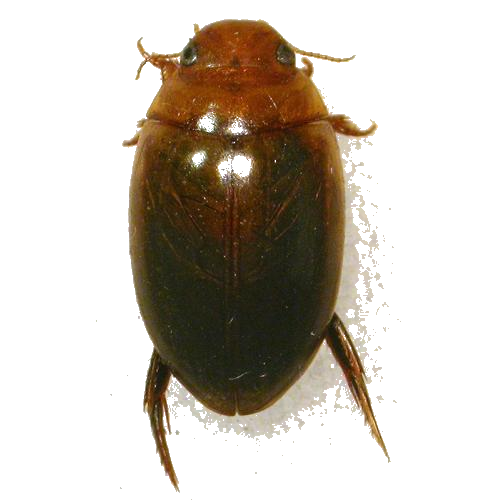
Agabus brunneus
Brown Diving Beetle
Agabus brunneus is a medium-sized diving beetle belonging to the family Dytiscidae. This distinctive species is characterised by its brown coloration and specialised adaptation to lowland temporary streams with porous gravels. As a BAP priority species expected to warrant Endangered classification, it represents a critically important component of Britain's freshwater biodiversity.
View Profile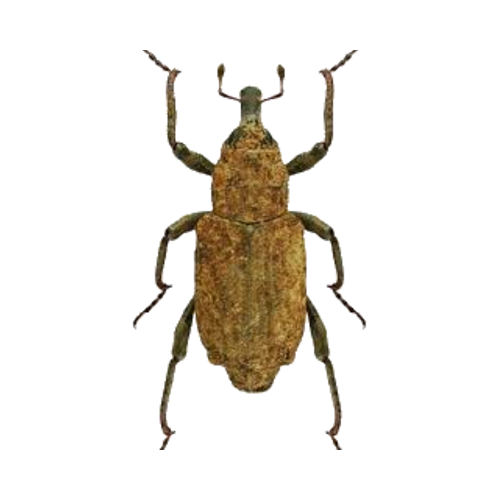
Bagosus nodulosus
Flowering-Rush Weevil
Bagosus nodulosus is an extremely rare aquatic weevil belonging to the family Curculionidae. This specialist species is entirely dependent on flowering rush (Butomus umbellatus) for its survival, with larvae developing within the plant's flower heads. As one of Britain's most endangered aquatic beetles, it represents a critical indicator of healthy aquatic plant communities.
View Profile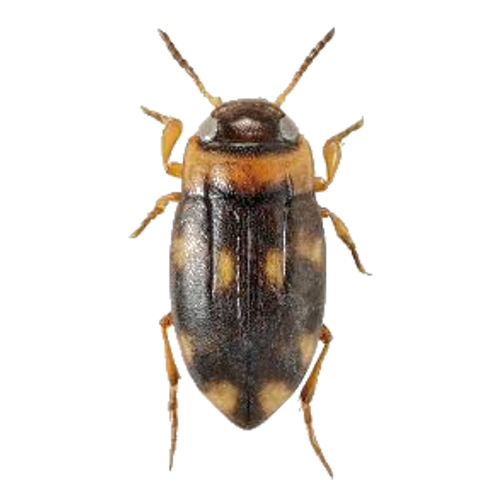
Bidessus minutissimus
Minutest Diving Beetle
Bidessus minutissimus is a tiny diving beetle belonging to the family Dytiscidae, living up to its name as one of Britain's smallest aquatic beetles. This specialist species is adapted to acidic, nutrient-poor waters in heathland and moorland environments, where it plays a crucial role in maintaining the ecological balance of these unique aquatic communities.
View Profile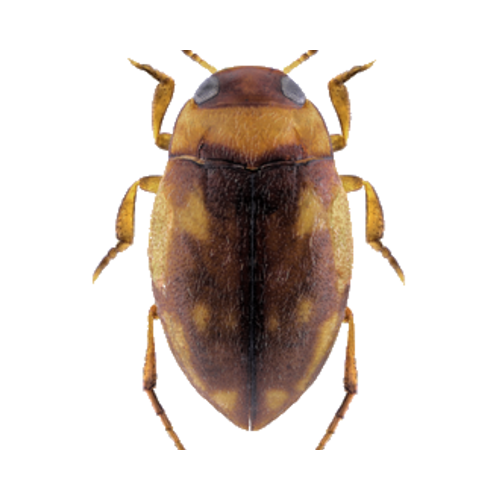
Bidessus unistriatus
One-grooved Diving Beetle
Bidessus unistriatus is a critically endangered small diving beetle characterised by the single groove on its elytra that gives it its common name. This extremely rare species represents one of Britain's most threatened aquatic beetles, with only a handful of confirmed sites remaining. Its dependence on pristine acidic bog habitats makes it particularly vulnerable to environmental change.
View Profile
Donacia aquatica
Zircon Reed Beetle
Donacia aquatica is a distinctive reed beetle belonging to the family Chrysomelidae, renowned for its metallic coloration that gives it the common name "Zircon Reed Beetle." This semi-aquatic species is closely associated with emergent aquatic vegetation, particularly Sparganium species, and represents an important component of wetland ecosystems across England and Wales.
View Profile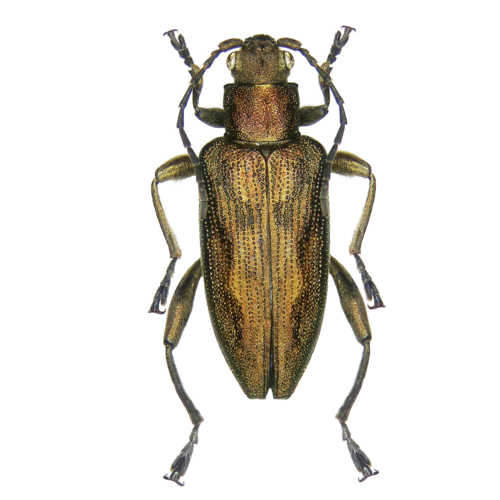
Donacia bicolora
Two-tone Reed Beetle
Donacia bicolora is a distinctive reed beetle named for its characteristic two-tone metallic coloration. This semi-aquatic species is associated with branched bur-reed and club-rush communities, representing a specialist component of high-quality wetland ecosystems. Its scattered distribution and specific habitat requirements make it a valuable indicator of pristine aquatic plant communities.
View Profile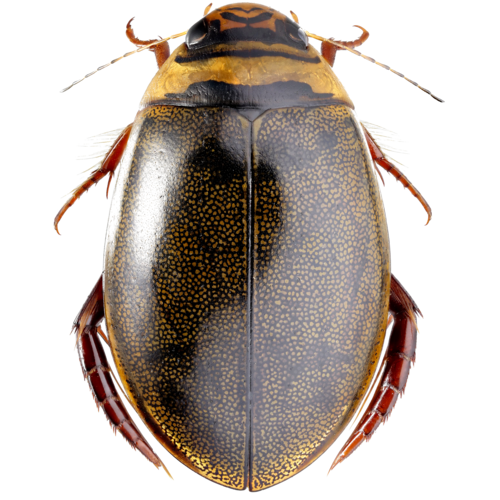
Graphoderus zonatus
Spangled Diving Beetle
Graphoderus zonatus is one of Britain's most spectacular and critically endangered diving beetles, renowned for its distinctive spangled appearance that gives it its common name. Now confined to a single pond in Woolmer Forest, Hampshire, this large predatory beetle represents one of the most dramatic examples of species decline in UK freshwater systems.
View Profile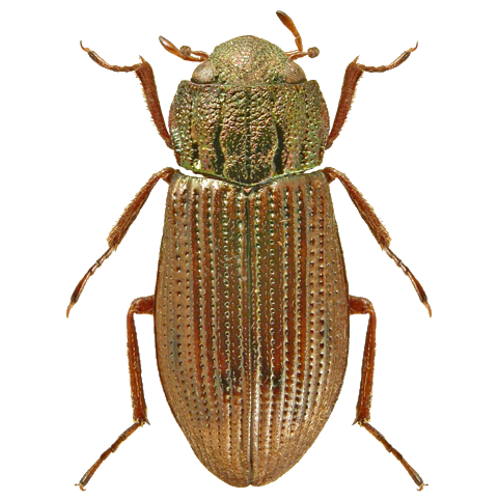
Helophorus laticollis
New Forest Mud Beetle
Helophorus laticollis is a distinctive water scavenger beetle endemic to the New Forest in southern England, earning it the common name "New Forest Mud Beetle." This specialist species is adapted to the unique temporary pond systems of the forest's heathland landscape, representing one of Britain's most geographically restricted aquatic beetles.
View Profile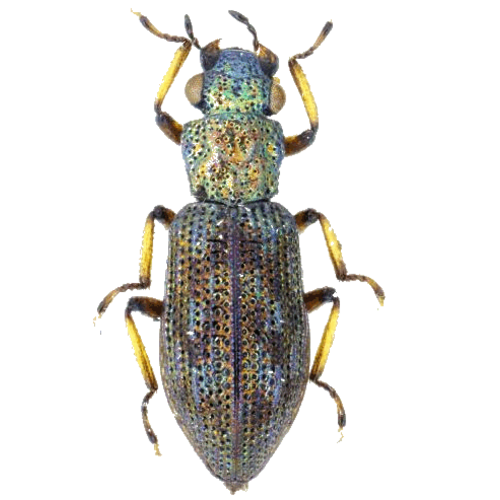
Hydrochus nitidicollis
Gravel Water Beetle
Hydrochus nitidicollis is a rare water scavenger beetle specialised for gravel-rich aquatic environments, earning it the common name "Gravel Water Beetle." This distinctive species represents one of Britain's most habitat-specific aquatic beetles, requiring the precise combination of flowing water and exposed gravel substrates that are increasingly rare in modern watercourses.
View Profile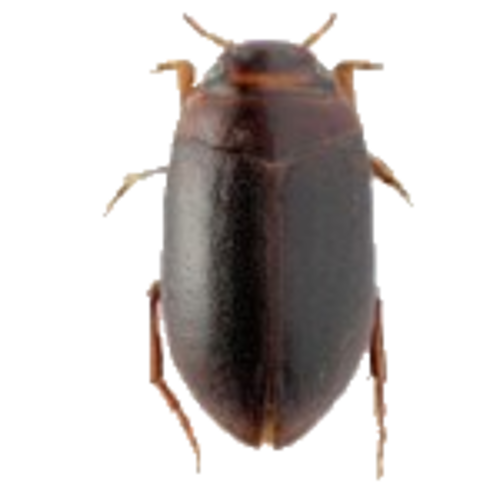
Hydroporus necopinatus
Ron's Diving Beetle
Hydroporus necopinatus, affectionately known as "Ron's Diving Beetle" after its discoverer, is one of Britain's most recently described and critically endangered diving beetles. This UK BAP statement species represents recognized rarity and is typically found in the most pristine acidic aquatic environments, making it a key indicator of high-quality bog and flush ecosystems.
View Profile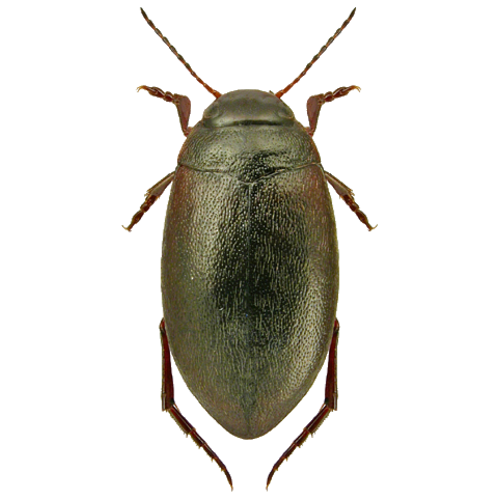
Hydroporus rufifrons
Oxbow Diving Beetle
Hydroporus rufifrons, commonly known as the "Oxbow Diving Beetle," is a specialist species adapted to the unique environments of oxbow lakes and floodplain pools. This diving beetle represents an important indicator of healthy river floodplain systems and is found across England and Scotland in areas where natural river meandering and flooding patterns are maintained.
View Profile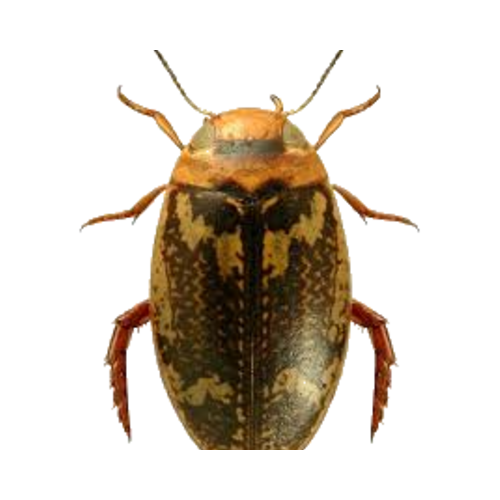
Laccophilus poecilus
Sussex Diving Beetle
Laccophilus poecilus, known as the "Sussex Diving Beetle," is one of Britain's most geographically restricted aquatic beetles, occurring in England only with populations confined to very few Sussex sites. This small diving beetle represents a critically important component of downland pond ecosystems and serves as an indicator of high-quality chalk downland habitats.
View Profile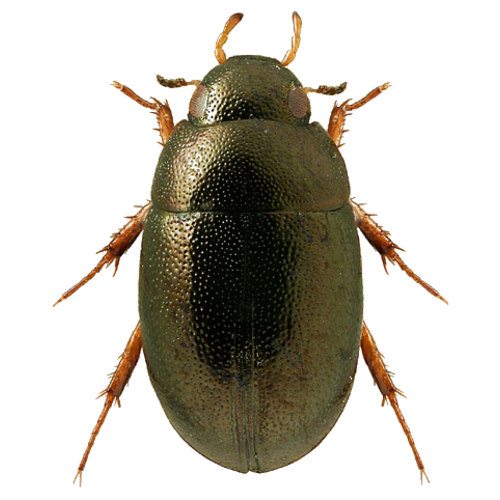
Paracymus aeneus
Bronze Paracymus
Paracymus aeneus, known as the "Bronze Paracymus," is a small water scavenger beetle designated as a UK BAP priority species. This distinctive beetle is characterised by its metallic bronze coloration and specialised adaptation to marginal zones of still or slow-flowing water bodies where organic detritus accumulates, making it an important indicator of healthy aquatic ecosystems.
View Profile